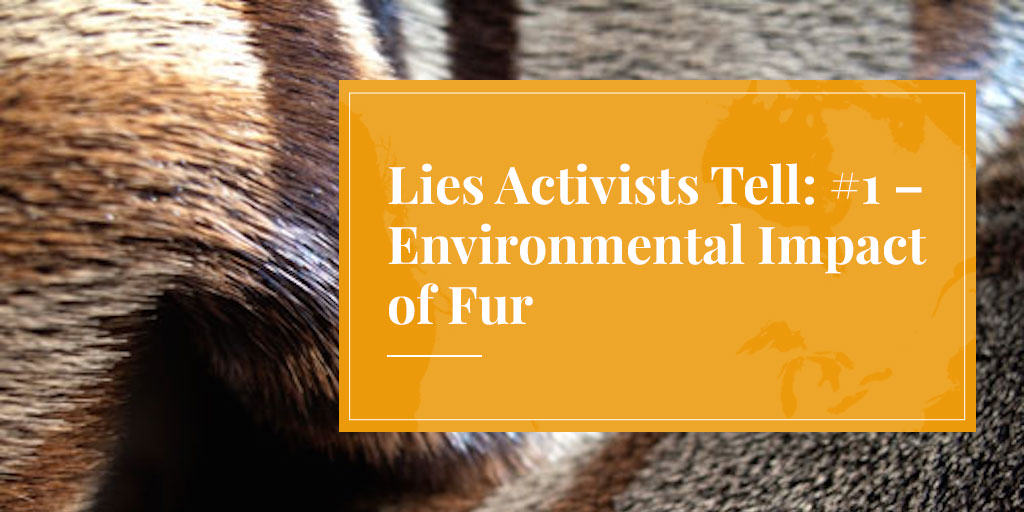
The Fur Council of Canada’s Fur is Green campaign clearly caught animal activists by surprise. In their scramble for a rebuttal, they have resorted to fabricating “evidence” about fur’s environmental impact that sounds credible – at least until you check their sources!
One of the most commonly-repeated activist claims is that “a World Bank Report has shown that fur dressing is the third worst polluting industry, following pesticides and fertilizers, synthetic resins and plastics.” (see: NOTES, below)
If true, this would be a serious charge, so I hunted down the original study. The report in question is The Industrial Pollution Projection System, produced by the World Bank Policy Research Department (Policy research working paper #1431, by Hemamala Hettige et al.) This study was drafted in March 1995, based on 1987 (27-year-old!) US statistics.
Reading through this highly technical econometric study we learn that “Conclusions are those of the authors and should not be attributed to the World Bank”. Interesting. Also that “Sectorial pollution is thought to be quite responsive to effective environmental regulation in many cases…” (p.9, E-4) Encouraging, because environmental protection regulations have certainly improved considerably over the past 26 years. But let’s read on …
Ah, finally, there it is: a table listing the most polluting sectors. And what do we find? The sector listed in third place for environmental pollution is clearly identified as “Leather tanning and finishing” (ISIC Code # 3231, Table 4.1, p.23) – NOT “fur dressing and dyeing” (ISIC Code #3232). Fur dressing is a completely different process using much more benign chemicals, because fur dressers must protect the fur and hair follicles. (Leather tanners have no such concerns: they want to remove the fur.) In fact, fur dressing is not even listed in the top 75 polluting industry sectors by the World Bank report! (pg. 23)
Digging further into this study, we find a more extensive list of industry sectors, summarizing their “toxic pollution intensity” (pounds of pollutants per million $ of output.) Here we find confirmation of what common sense would dictate: fur dressing produced only 15% of the air pollutants, 9% of the water pollutants, and barely 7% of the land pollutants compared with leather tanning. (Pg 47.)
In conclusion: it is completely false to claim that the World Bank identified fur dressing as a highly polluting industrial sector. This study showed no such thing. The activists who first quoted this report either don’t understand the important difference between fur dressing and leather tanning, or intentionally misrepresented the findings.
In my next posts we will take a closer look at two other “studies” that are repeated referenced by activists to challenge the fur trade’s environmental credentials.
**************************
NOTES:
Here are a few recent examples of activists (falsely) claiming that the World Bank report cited fur dressing as one of the most polluting industrial sectors:
- “Fur dressing has been ranked as one of the world’s five worst industries for toxic-metal pollution – not by animal rights protesters, but the World Bank. If fur is green, then the term ‘green’ is meaningless.” From “Fur is not back in style – Britain won’t stand for it”, by Tansley Hoskins, The Guardian, 29 October 2013.
- “The Fur Council of Canada argues that their product is green because real fur is a ‘natural fiber’. But after an animal is killed and the fur is removed, it must be heavily processed using carcinogenic chemicals to prevent it from biodegrading. In 1995 the World Bank, in their report entitled The Industrial Pollution Projection System, ranked fur processing (and in particular the tanning process) as number three in their list of toxic industrial processes.” From “Fur is Mean”, by Eric Simpson, The Queens Journal, 8 November 2013.
- “In fact, the World Bank ranks fur processing as the world’s fifth biggest toxic metal polluter. And ironically, given fur’s allure as a sexy material, tanning relies on chemicals such as toluene and lead. Both reduce human fertility.” From “Is ‘ethical fur’ the fashion industry’s most cynical con yet?”, by Danny Penman, The Daily Mail, 17 March 2011.
***
To learn more about donating to Truth About Fur, click here.











As I understood it the exact same chemicals are used for leather tanning and fur tanning, since it is the same process. Do you have any evidence for your claim that ‘Fur dressing is a completely different process using much more benign chemicals’?
If you read my article a bit more carefully you will see that even this “World Bank” study clearly recognizes that fur dressing is a completely different process than leather tanning. My article also explains why the two processes are so different: it is because the chemicals used in fur dressing must be gentle enough to protect the fur hairs and follicles. (In leather tanning there is no such concern because the goal there is to completely remove the hair or fur.) For more information about fur dressing, check out the “Fur Processing” section of our TruthAboutFur.com website.
Doesn’t surprise me much that they can’t STAND the truth.